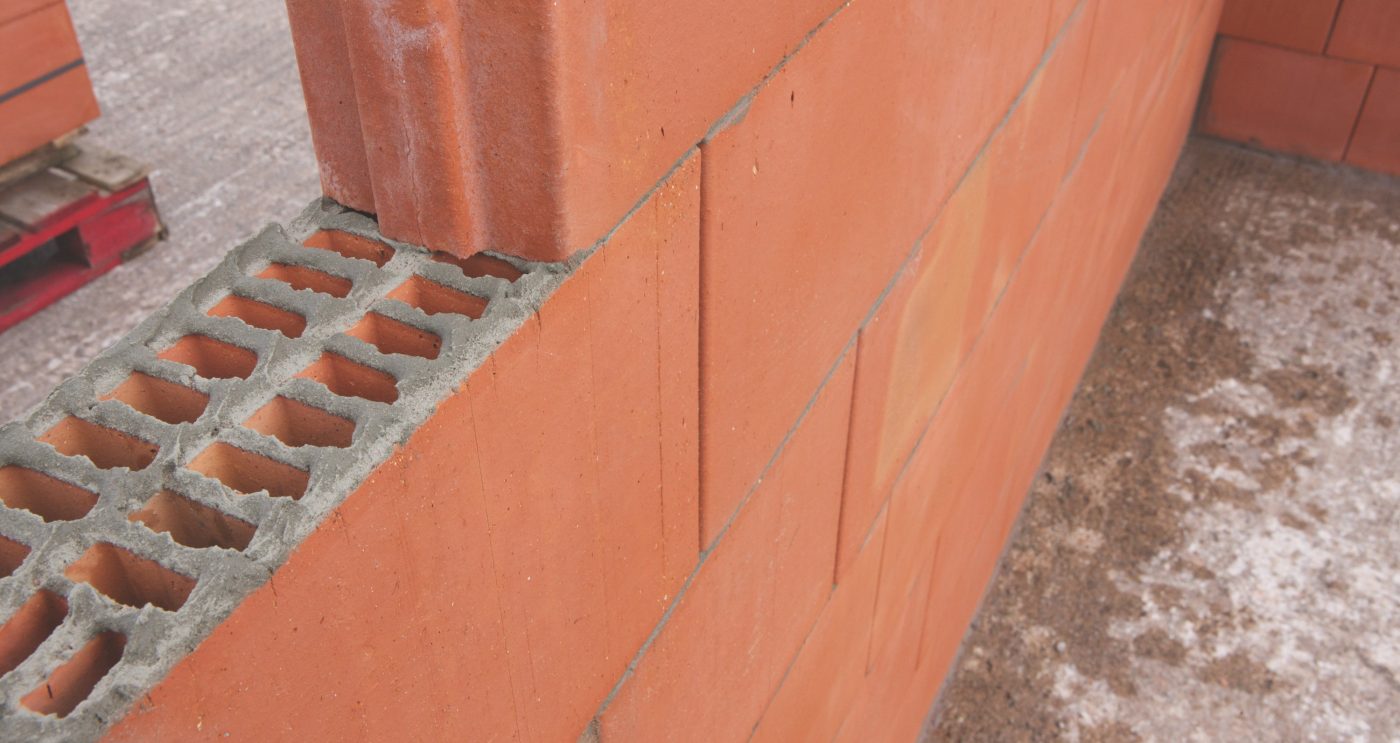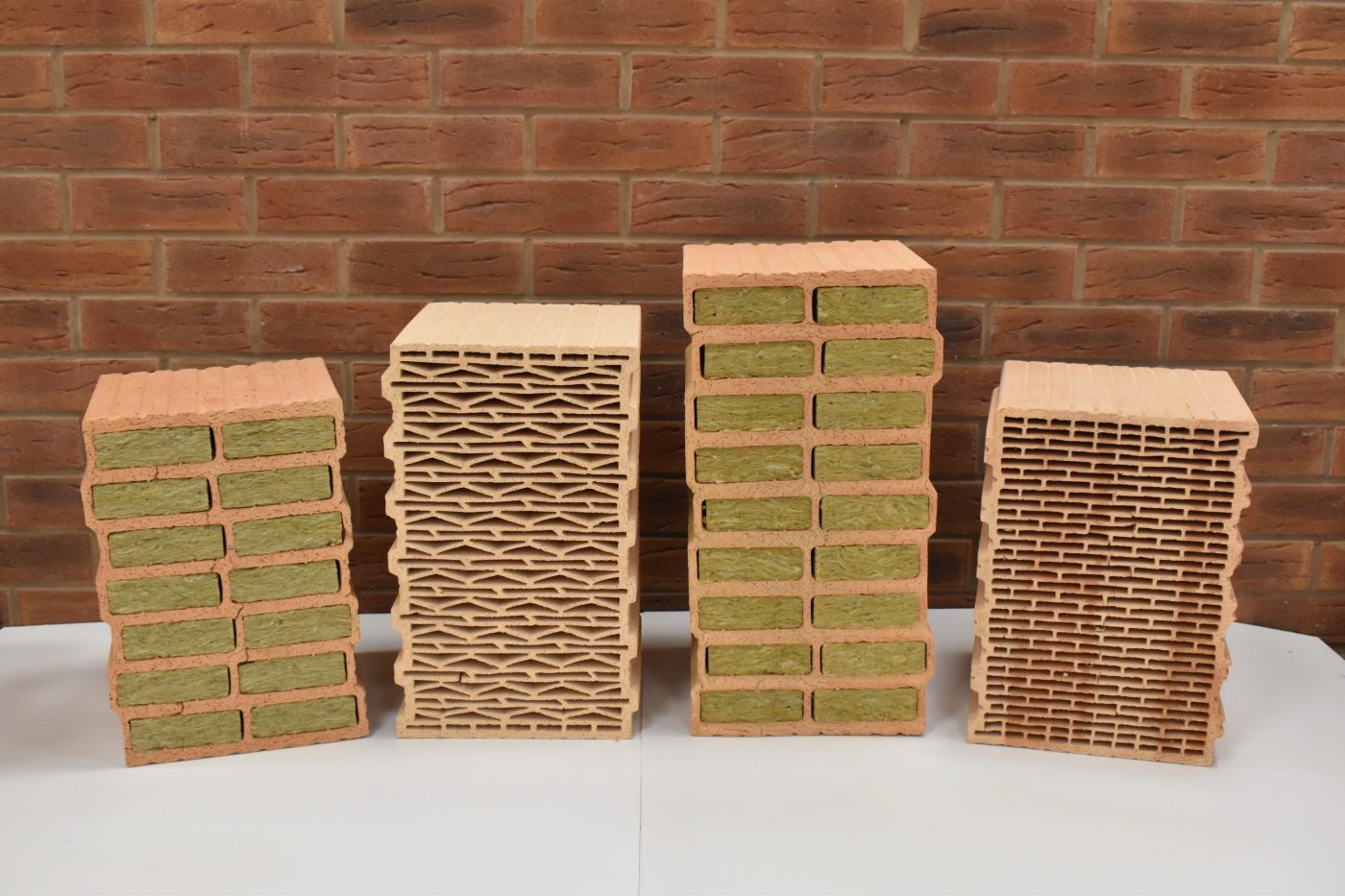Discover the benefits of Porotherm clay block walling and how you can use it for your next project.



Discover the benefits of Porotherm clay block walling and how you can use it for your next project.
Porotherm clay block walling system is an innovative method of construction with the reassuringly traditional values of clay material, it delivers versatile, high performance, and sustainable walls with full technical support available at all project stages.
Porotherm can be used as loadbearing and non-loadbearing masonry above DPC in party walls, partition walls, inner leaf of cavity walls. It can also be used as the outer leaf of cavity walls when used with an impervious cladding.
Porotherm has been a mainstay of construction across Europe for decades. Since its introduction into the UK in 2008, it has become well established as an excellent alternative to traditional masonry such as concrete blocks, as well as other systems such as timber or lightweight steel frames.
The range of benefits offered by building with Porotherm cover a broad spectrum of subjects from economic to environmental to lifestyle.
Due to the interlocking precision design, the lighter weight compared to other materials and the specialist tools, such as the mortar roller, Porotherm is very quick to build with. An average of 25-30m² per man, per day, is easily achievable, which is much quicker than traditional masonry which is between 12-15m² per man, per day.
Construction with Porotherm uses around 95% less water than construction used in traditional methods. In a typical 212m² building, traditional mortar will consume circa 1060 litres of water when compared to just 72 litres for the thin joint mortar that is used with Porotherm. Therefore, Porotherm projects are much less reliant on the local water supply and the system takes less time to achieve a watertight shell.
The compressive strengths of Porotherm’s core range are typically 10 N/mm², which is more than standard concrete blocks that are usually around 7 N/mm². As clay blocks are versatile, one block can usually fit the majority of requirements, as a result, there is no need to keep multiple blocks on-site, reducing the risk of the wrong block being used and optimising storage space on-site.
Porotherm blocks are generally lighter than concrete blocks, allowing workers to maintain steady production rates without the risk of repetitive strain injuries. Precision engineering means no sharp arrises, reducing the risk of cuts. ZeroPlus mortar applied using the specially designed roller reduces dermatological risk.
Used for thousands of years in construction worldwide, clay remains the most sustainable solution for modern buildings. Clay is an inert material that provides no risk to either the environment or end-user. Its natural properties means that it provides a complete, long term sustainability, not only offering increasingly sophisticated low-carbon product manufacture, but giving a building life of over 150 years with little or no maintenance.
Strong and durable, yet lighter and often less of a strain to work with than many of the alternatives, clay also builds-in sound and temperature-control benefits wherever it’s used – creating the ideal internal living environment.
Thermally efficient in helping to regulate variations in temperature; air-tightness is maximised with a parge coat or wet plaster on it's inner face.
Porotherm can be used for monolithic and cavity wall construction and provides an airtight yet breathable solution using a fabric first approach. It is a strong, stable, adaptable method of construction which allows flexibility in the choice of external facades and systems. Porotherm is classed as a low density (LD) masonry unit in accordance with BS EN 771-1 and as such should only be used above DPC at ground level and be protected by an impervious cladding if used externally.
Find products, guidance and information on how to get the most from your clay block projects.

Browse our range of blockwork products and accessories, order a sample, or get in touch with us to find out more.